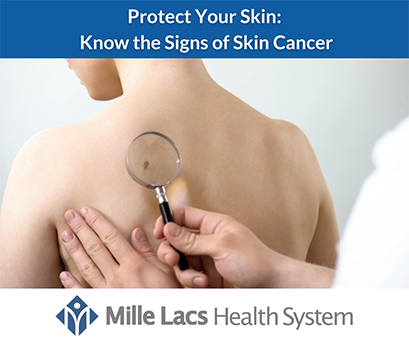Protect Your Skin: Know the Signs of Skin Cancer
July 7, 2025
According to the Skin Cancer Foundation, 9,500 people are diagnosed with skin cancer every day. This makes skin cancer the most common form of cancer in the United States, demonstrating the importance of early detection and prevention.
Skin cancer is the uncontrolled growth of abnormal cells in the epidermis, the outermost layer of skin. One of the leading causes is prolonged exposure to ultraviolet (UV) radiation, whether from the sun or artificial sources like tanning beds. UV radiation can damage DNA in skin cells, resulting in disorganized cell division and the potential development of cancerous tumors.
A common sign of skin cancer is a noticeable change in the skin. This may include a new growth resembling a mole or bump, changes in the size of an existing mole or freckle, rough patches, non-healing sores, or areas that are itchy or painful. One helpful method for identifying possible skin cancer is the ABCDE rule:
A – Asymmetry: One half of the spot does not match the other.
B – Border: The edges are irregular or poorly defined.
C – Color: The lesion varies in color, including shades of brown, black, tan, red, white, or blue.
D – Diameter: Melanomas are typically larger than six millimeters, about the size of a pencil eraser.
E – Evolution: The spot changes in size, shape, or color over time.
If you notice any of these warning signs, contact your healthcare provider promptly.
While anyone can develop skin cancer, several factors increase the risk. These include having fair skin that burns easily, blue or green eyes, a family history of melanoma, frequent sunburns, and a high number of irregularly shaped moles. Tanning beds, often misperceived as a safe alternative to sun exposure, emit concentrated UV radiation that significantly heightens the risk of skin cancer, especially with repeated or prolonged use.
Understanding the risks and recognizing the signs early can make all the difference in protecting your health. Simple steps like applying broad-spectrum sunscreen, wearing protective clothing, and seeking shade during peak sunlight hours can go a long way in reducing your risk.
